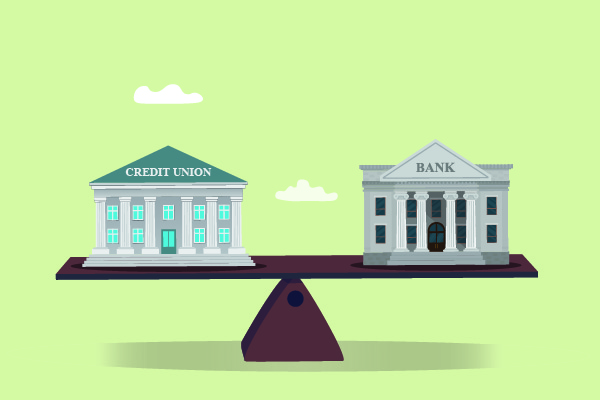
What’s the Difference Between a Credit Union and a Bank, Anyway?
When it comes to managing your finances, there are various options you can take from credit unions to banks to hiding your money under a mattress. We can’t recommend the last one but both credit unions and banks provide financial services, though they differ in their ownership structure, customer focus, and overall operations. As a credit union, Allied is obviously partial but our goal is always to give our members the needed information so that they can make an informed decision about which institution best aligns with your financial goals.
So, how do credit unions and banks differ?
Who Owns Who?
One of the fundamental distinctions between credit unions and banks lies in their ownership structure. Credit unions like Allied are not-for-profit financial cooperatives owned and operated by their members, who are also the customers. Each member has an equal say in the institution’s decision-making process, regardless of their account balance. On the other hand, banks are for-profit entities owned by shareholders who aim to maximize profits and provide returns to their investors.
Coming into Focus
Credit unions and banks have different approaches when it comes to their customer focus. Credit unions prioritize their members’ needs and interests above all else. Since members are also the owners, credit unions are driven by the objective of providing high-quality, personalized services to their members. Banks, on the other hand, are profit-driven and focus on generating returns for their shareholders. While banks strive to provide good customer service, their primary goal is to maximize profits and shareholder value.
Calling All Members
Credit unions typically have membership requirements that must be met before individuals can open an account. These requirements can include belonging to a specific community, profession, or organization. For Allied, our members are healthcare workers or their families in the Southern California area. In contrast, banks have no membership restrictions, making them more accessible to the general public. Banks often have a wider geographical presence and a larger network of branches and ATMs, providing customers with greater convenience and accessibility.
At Allied, we are proud to be a local, community organization but understand the need to service our 21st century members who have a need to bank from anywhere in the country and the world. While we don’t want to compete on the reach of a bank, we make sure our technology options like mobile and online banking are easy to use and reliable. We also are a part of the CO-OP Network which gives members surcharge-free access to more than 30,000 ATMs nationwide.
What’s On the Menu
Both credit unions and banks offer a range of financial products and services, including checking accounts, savings accounts, loans, credit cards, and mortgages. However, there can be differences in the terms, rates, and fees associated with these products. Credit unions are known for offering competitive interest rates on savings accounts and loans, as their focus is on benefiting their members rather than generating substantial profits. Banks, on the other hand, may have a wider range of product options but may charge higher fees and interest rates to cover their operational costs.
Who Calls the Shots
Since credit unions are owned and governed by their members, decision-making processes differ from those of banks. Members of credit unions typically have the ability to vote on important decisions, such as electing the board of directors. This democratic structure allows members to have a direct say in the direction of the credit union and ensures that decisions are made in the best interest of the members. Banks, being profit-driven entities, make decisions based on the interests of their shareholders and management.
Keeping What’s Yours
Both credit unions and banks are subject to regulatory oversight to ensure the safety and soundness of the financial system. Credit unions are regulated by the National Credit Union Administration (NCUA), while banks are regulated by the Office of the Comptroller of the Currency (OCC), the Federal Reserve, or the Federal Deposit Insurance Corporation (FDIC). Credit unions are often insured by the National Credit Union Share Insurance Fund (NCUSIF), while banks are typically insured by the FDIC. These insurance programs provide protection to depositors in the event of a bank or credit union failure, up to certain limits, typically $250,000.
The Bottom Line
Finance is a matter of individual taste, that’s why we call it personal finance, and we are lucky that savers have so many options. Banks, especially big ones, offer many products and services and can have newer and slicker tools and resources. However, customers pay for them, either in fees or in a lack of customer service. Credit unions come with limits, both in the products they offer and in the members they can serve, but those products are usually more affordable and those members are neighbors and friends. Everyone needs to make the best decision for their financial life but if you like low fees, great rates, decision-making power and a focus on member service, a credit union may be for you.



